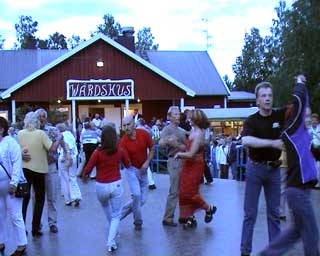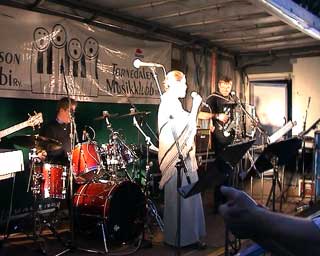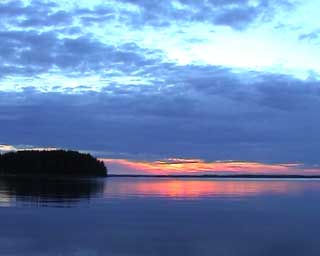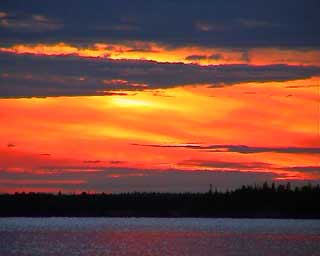Site index
About
Dance calendar
Dance courses
Noticeboard
Dance reports
Techiques
Improvisation
Schottishe
Hambo
Waltz
Snoa & Polka
Mazurka
Polskor
Modern Dance
Other
Links
..Courses
..Festivals
..Other
History
Blog
Outdoors
..Reports
..Walk Guide
..Mountain walks
Dogs
..Lava
Preferences
Login
Contact
Mosquitoe Safari at Seskarö
July 11, 2004

Seskarö is situated furthest away up in the north in the Baltic Bay, about 15 km from Haparanda and the Finish frontier. The inland area around the frontier is named Tornedalen (the Torne valley), named after the river dividing the countries. The area is multilingual, the Finish and Swedish languages are both used in parallel, and there is also a own minority language meänkieli "Tornedalska" that they have the right to use, stipulated in law. The language has influences from both languages, but I believe the Finnish language has a stronger influence than the Swedish.
Tornedalen is not only a geographical but also a cultural and meteorological
area, and it does also embrace the coastline and archipelago nearby.
Seskarö is located close enough to the border to be included in the
area, and the Finish language is present here. And it is not just the
languages that are influenced, there are also many other cultural influences
across the border.
Our recurrent summer visit on an islet nearby coincided this year with a visit by the dance floor to Seskarö. The phenomenon, that previously was named 'Dansbanan kommer' (the Dance Floor Arrives), has been renamed to Sääski Safari - Myggsafari (Mosquitoe Safari). The tour this year covered nine places, five on the Finish side and four on the Swedish.
A very nice dance floor had been built up in front of the restaurant close to the sawmill. It is not every day we can take the boat to a dance, but the sea was smooth and when we arrived to the Seskarö village we were still dry.
When the dance started, we could immediately notice the Finish influence. Despite that the dance event was of 'modern' kind, the dance opened with finish sounding valssi, and some more waltzes were played during the evening. There was also some humppa and tango, but also plenty of dance music that is similar to what we are used to in the Stockholm area..
The Finish language is not easy to understand for the uninitiated, but when coming to dance and dance music I think it is more that unites than distinguish us. And talking for myself, I would not object to some Finish influence with more of waltz, tango and humppa on the modern dance events.
The overall impression was that this was a very nice dance, where the musical influence from Tornedalen and Finland was significant and very much appreciated.
This subject can not be closed until I report about the mosquitoes. Yes, they were there. Probably we saw as many of them as we would have seen lions on a lion safari.
And finally a last memory from this dance event, located not far from the polar circle.. Despite that we had the summer solstice well behind us, when we left the dance at 00:30 the twilight was still very adequate for the video camera.





